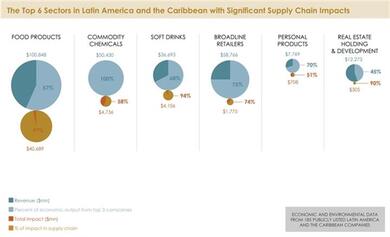Blogs Navigation
Sustainable BusinessRecent posts

Financial Health: Driving Growth in Latin America and the Caribbean
According to the latest Global Findex database, the proportion of adults in Latin America and the Caribbean (LAC) with account ownership rose from 39% in 2011 to over 75% in 2025. This increase was driven by the rise of digital-first financial service providers, expanded government transfers, and innovations that enhance the value proposition, such as the growth of e-commerce and instant payment systems in countries like Brazil, Peru, and Costa Rica.

IDB Invest and the New Push for the Private Sector in Paraguay
Imagine investing in a portfolio of projects in a country with sustained economic growth, low inflation, abundant clean energy, and preferential access to a regional market of 270 million consumers. That country is Paraguay, where IDB Invest has committed to mobilizing up to $1 billion to support strategic private-sector projects that drive sustainable development.

Energy and Transport Infrastructure: Projects Driving Jobs and Transforming Communities
IDB Invest works to boost job creation through the private sector and ensure these opportunities reach areas with the potential to develop new productive sectors and generate formal employment. Financing energy and transport infrastructure projects in Latin America and the Caribbean has been crucial for creating quality jobs and increasing women's workforce participation.

A survival guide for business: The role of corporate governance and sustainability
By Rocío Budetta and Andrea Ortega Químicas Veterinarias is a small producer and distributor of veterinary products in Nicaragua. The Hoigjelle family founded the company in 1999, and since then it has met with success in this Central American country with a market of more than 120,000 micro, small, and medium-sized enterprises.

Greening corporate value chains lowers environmental impact and lifts competitiveness
By David Bloomgarden and Michael Hofmann Adidas, one of the world’s top two sportswear manufacturers, recently ended its business relationship with 13 of its Asian suppliers as a result of their severe or repeated noncompliance with labor, health, and safety workplace standards at their factories. This is one example of large multinational corporations working harder to demonstrate to their ever-more-demanding stakeholders that they operate sustainably. As a result, companies’ sustainability strategies are increasingly directly relevant to their operations—and are resulting in positive financial returns. An analysis of S&P 500 companies confirmed that businesses that have built sustainability into their core strategies achieve financial profitability that is significantly higher than that of their laggard peers—by between 18% and 67%.

Development finance institutions and private sector innovation
By Andre Averbug Development finance institutions (DFIs) can play an important role promoting innovation for increased competitiveness and sustained development in their client countries. Properly executed programs and projects can leverage private investment placement, develop local capital markets, improve resource allocation, as well as avoid moral hazard.

A Green Revolution under the Central American Sun: Solar energy in Honduras
[caption id="attachment_2625" align="alignleft" width="448"] Solar energy in Honduras: the roof of Embotelladora de Sula[/caption] The same sun that bathes Central America’s beaches is an increasingly valuable asset for many companies in the region. That is the case with the Honduran bottling plant Embotelladora de Sula, one of the largest rooftop photovoltaic projects in Latin America.

Three reasons why sustainability supports SME growth
Doing business these days is about more than just profitability. It’s also about sustainability, even for small and medium-sized enterprises (SMEs). Despite this, lots of SMEs are standing on the sidelines, hesitant to make investments in sustainability that don't guarantee an immediate return. So let's look at these three reasons to invest in SME sustainability initiatives:

Three surprising habits of highly productive women in the private sector
In Argentina, 61 percent of mothers work outside the home. In Chile, the US and Mexico, those numbers are 59 percent, 57 percent and 42 percent, respectively. Globally, that percentage is growing. As I prepare to join these women after the birth of my second child, I know I must find ways to be more productive and disciplined in my corporate environment. To tackle this, I spent my last weeks of maternity leave seeking the advice of the most highly productive women in the private sector I know. Their surprising answers on work-life balance, professional success and doing more with less offer tools for women, men and companies more broadly.


